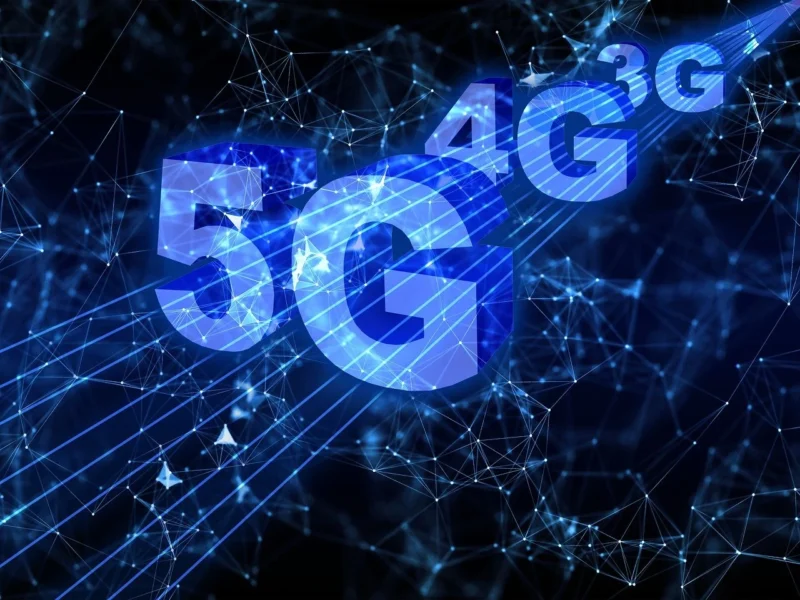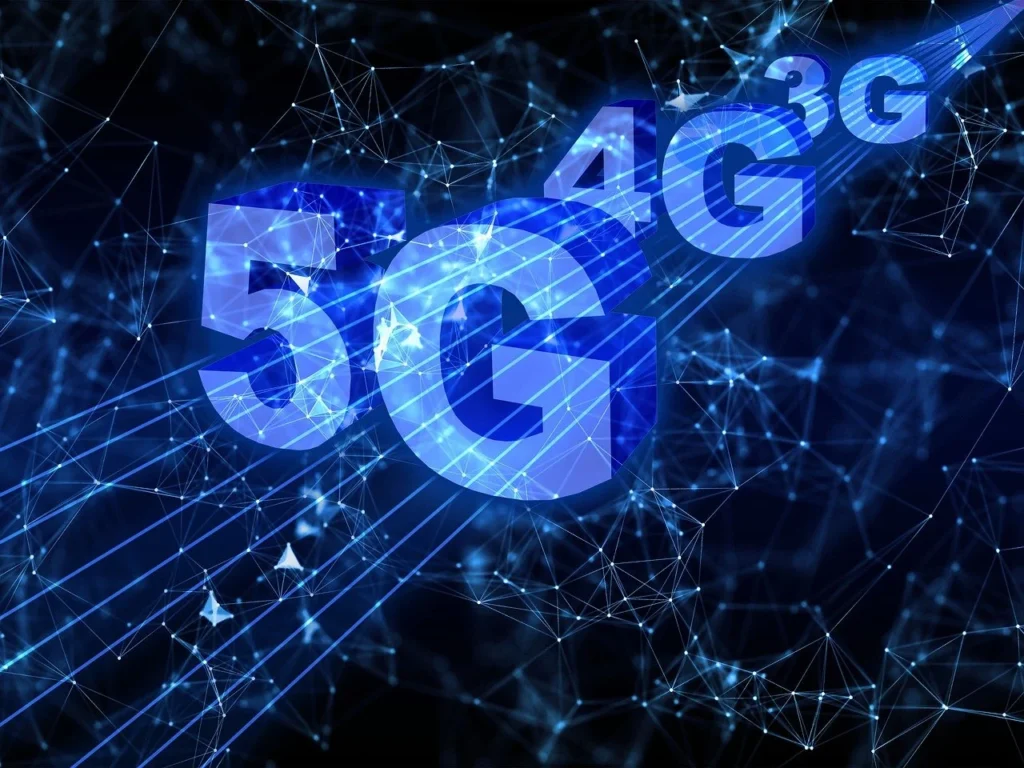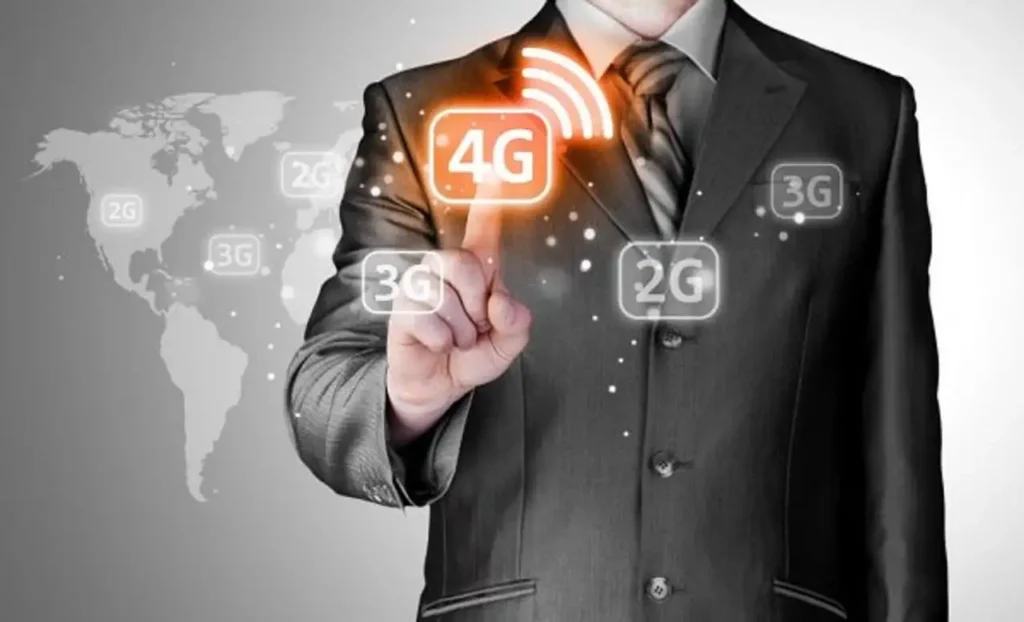The Evolution of Cellular Technology: All You Need To Know!

Cellular technology has witnessed a remarkable evolution over the years, transforming the way we communicate and access information. The journey started with the first-generation (1G) cellular networks, which offered basic analog voice services.
The second-generation (2G) networks that followed it created text messaging and introduced digital voice communication.
With the advent of third-generation (3G) networks, the landscape of cellular technology took a significant leap forward, enabling faster data transfer rates and making mobile internet a reality.
The introduction of fourth-generation (4G) networks marked a major milestone in the evolution of cellular technology. With enhanced data speeds and improved network capacity, 4G networks revolutionized the mobile experience, allowing users to stream high-definition videos, play online games, and engage in other data-intensive activities on their devices.
However, as the demand for faster connectivity and more efficient networks grew, the industry turned its attention towards the next generation – the highly anticipated 5G networks.
Understanding the Need for Faster Connectivity

The increasing reliance on technology in today’s world has led to a growing need for faster connectivity. With more and more devices being connected to the internet, from smartphones and tablets to smart homes and interconnected cities, there is a constant demand for high-speed data transfer.
People expect instant access to information, seamless streaming of videos, and fast download speeds for their files. The rise of cloud computing, where the processing and storage of data heavily rely on a dependable and strong internet connection, has increased this demand even further.
As a result, the need for faster connectivity has become a top priority for individuals, businesses, and governments alike.
In addition to the everyday use of technology, faster connectivity is essential for various industries and sectors. For instance, in the healthcare sector, there is a growing trend toward telemedicine, where doctors and patients can communicate remotely through video conferencing.
This requires a fast and stable internet connection to ensure smooth and uninterrupted communication. Similarly, industries such as finance, logistics, and manufacturing heavily rely on real-time data and communication to streamline their operations and improve efficiency.
In these industries, slow connectivity can hinder decision-making processes and affect overall productivity. Therefore, faster connectivity has become a crucial enabler for the digital transformation of various sectors, driving innovation and economic growth.
One of the advancements aiding this need for speed is eSIM technology by Global YO, which offers a faster and more seamless way to connect devices to the internet without the physical limitations of traditional SIM cards.
Exploring the Advancements in 4G Networks

4G networks have significantly revolutionized the way we connect and communicate. With faster speeds and improved reliability, these advancements have paved the way for seamless browsing, streaming, and downloading experiences.
The key technological breakthroughs in 4G include multiple-input multiple-output (MIMO) technology and orthogonal frequency-division multiplexing (OFDM).
MIMO allows for the transmission and reception of multiple signals simultaneously, which enhances the network’s capacity and improves overall performance.
On the other hand, OFDM divides the data into multiple subcarriers, allowing it to be transmitted simultaneously, thus minimizing interference and improving efficiency.
These combined advancements have not only facilitated faster internet on mobile devices but have also opened up new opportunities in areas such as IoT and smart cities.
Moreover, 4G networks have transformed the way we communicate, introducing features such as voice over LTE (VoLTE), video calling, and high-definition (HD) video conferencing. VoLTE enables high-quality voice calls over the 4G network, ensuring crystal-clear conversations and eliminating the need for traditional circuit-switched voice calls.
Additionally, video calling has become seamless and widely adopted, allowing users to connect face-to-face with friends, family, and colleagues, regardless of physical distance. Furthermore, HD video conferencing has brought remote collaboration to new heights, making it easier for businesses to connect and work together regardless of location.
These advancements in 4G have not only reinforced our communication capabilities but have also introduced new avenues for productivity and collaboration.
You may also like to check out Enhance Your Travel Experience: The Benefits of Custom Flight Tags.
Unveiling the Promise of 5G Networks
5G networks have been a topic of much anticipation and excitement in recent years. As the next generation of cellular technology, 5G promises to revolutionize the way we connect and communicate.
With keywords such as “high-speed,” “low latency,” and “massive connectivity,” 5G networks are expected to deliver faster internet speeds, reduce lag time, and accommodate a greater number of devices simultaneously.
One of the key promises of 5G networks is its ability to provide significantly higher internet speeds than its predecessors. With speeds up to 10 gigabits per second (Gbps), 5G networks are expected to be at least 10 times faster than 4G networks.
This means that tasks such as downloading large files, streaming high-definition videos, and even gaming on mobile devices can be done quickly and seamlessly.
The increased speed of 5G networks is set to transform the way we consume content and access information, enabling us to be more productive and efficient in our everyday lives.
A Closer Look at the Technical Differences
As we delve into the realm of cellular technology, it becomes crucial to examine the technical differences that distinguish various generations of networks. One major shift was observed when 4G networks emerged onto the scene, offering significant improvements in terms of speed and capacity.
These networks introduced a new air interface known as Long-Term Evolution (LTE) which enabled faster data transmission and enhanced reliability.
With 4G, users witnessed a remarkable leap forward in internet speeds, allowing for seamless video streaming, faster downloads, and smoother browsing experiences. However, as technology continues to evolve, it’s time to peer even further into the future and explore the promise of 5G networks.
5G, the next-generation cellular technology, promises to revolutionize connectivity with its unprecedented capabilities. Building upon the foundation laid by 4G networks, 5G introduces several technical advancements that push the boundaries of what is possible.
One notable distinction is the utilization of millimeter waves (mmWave), which operates at higher frequencies than previous generations. This allows for increased data capacity and faster connectivity, addressing the ever-growing demand for bandwidth.
Moreover, 5G incorporates advanced antenna technologies, such as Massive MIMO (Multiple-Input Multiple-Output), which utilizes a large number of antennas to enhance data transmission and reception.
Along with these technical improvements, network slicing and edge computing make 5G even more useful by letting users customize their connections for specific tasks and reducing latency.
Analyzing the Impact on Internet Speeds
With the advent of 5G networks, the impact on internet speeds is expected to be significant. The increased bandwidth and faster data transfer rates offered by 5G technology have the potential to revolutionize the way we connect to the internet.
With speeds that are estimated to be up to 100 times faster than current 4G networks, users can expect to experience lightning-fast downloads, seamless streaming, and virtually no lag when gaming or video conferencing.
Additionally, 5G networks’ reduced latency will further increase internet speeds. Latency, or the time delay between when data is sent and when it is received, is a crucial factor in internet performance.
With 5G, latency is expected to be reduced to a mere fraction of what it is in current cellular networks, enabling near real-time communication and enhancing the overall user experience.
This reduced latency will have a significant impact on applications that require immediate responsiveness, such as autonomous vehicles, remote surgery, and smart city infrastructure.
Examining the Role of Latency in Cellular Networks
Latency is a crucial factor when it comes to the performance of cellular networks. It refers to the delay between sending a request and receiving a response. In the context of cellular networks, latency plays a significant role in determining the overall user experience.
One of the main contributors to latency in cellular networks is the distance between the user and the cell tower. The signal has to travel through the air and various network components before reaching its destination, which takes time.
Additionally, the number of network hops and the congestion on the network can also impact latency. High latency can result in delays in loading web pages, buffering while streaming media content, and even affecting real-time applications such as online gaming and video conferencing.
In the context of emerging technologies like autonomous vehicles and remote surgery, low latency is even more critical, as any delay in transmitting data could have severe consequences.
Understanding the Capacity and Efficiency Improvements
The capacity and efficiency improvements brought about by 5G networks are set to revolutionize the way we connect and communicate. With its enhanced capabilities, 5G has the potential to support a significantly greater number of devices simultaneously.
This means that as more and more devices become connected in the Internet of Things (IoT), 5G can handle the increased demand effortlessly, ensuring smooth and uninterrupted connectivity for all users.
Moreover, the efficiency of 5G networks is expected to deliver faster speeds and lower latency compared to their predecessors. This means that tasks such as downloading large files or streaming high-definition videos will happen almost instantaneously.
The reduced latency also opens up possibilities for real-time applications such as remote surgery or autonomous vehicles, where split-second decisions can be critical.
Overall, the capacity and efficiency improvements offered by 5G networks promise a future of seamless connectivity and boundless potential for innovation.
The Potential Applications and Use Cases of 5G
The potential applications and use cases of 5G are vast and diverse, reflecting the transformative capabilities of this next-generation cellular technology.
One area where 5G is poised to make a significant impact is in the realm of healthcare. With its ultra-low latency and high bandwidth, 5G can enable real-time remote monitoring and telemedicine services, allowing doctors to provide accurate diagnoses and treatment recommendations without the need for in-person visits.
This has the potential to revolutionize healthcare delivery, especially in rural or underserved areas where access to quality healthcare may be limited.
5G can also support the growing need for wearable tech and Internet of Things (IoT) sensors in healthcare, making it possible to collect and send vital signs and other health data without any problems. This allows for continuous monitoring and personalized healthcare interventions.
Another area that stands to benefit from the deployment of 5G is autonomous transportation. With its ultra-high reliability and low latency, 5G can provide the necessary connectivity for self-driving cars, trucks, and other autonomous vehicles.
This technology can enhance road safety, increase traffic efficiency, and reduce transportation costs by enabling real-time communication and coordination between vehicles, infrastructure, and pedestrians.
Moreover, the high bandwidth of 5G can support the massive data requirements of autonomous vehicles, such as high-definition maps, sensor data, and real-time video feeds.
As a result, 5G has the potential to unlock a new era of smart transportation, revolutionizing the way we travel and reducing our dependence on fossil fuels.
Considering the Challenges and Future of Cellular Networks
With the continuous advancements in cellular technology, the challenges and future of cellular networks are becoming increasingly apparent. One of the key challenges lies in the ever-growing demand for faster connectivity.
As consumers and businesses alike rely more heavily on mobile devices for communication, entertainment, and productivity, the need for high-speed internet access is paramount.
This creates pressure for cellular networks to keep up with the escalating data requirements and deliver a seamless experience to users.
Another challenge that cellular networks face is the need for improved capacity and efficiency. As the number of connected devices continues to soar, the demand for network resources is also surging.
To address this, cellular networks need to optimize their infrastructure and allocate resources more effectively. Additionally, ensuring a reliable and secure connection is crucial, as privacy and data protection concerns remain at the forefront of users’ minds.
Meeting these challenges will require continued investment in research and development, as well as collaboration between network providers, technology manufacturers, and regulatory bodies.
Only by mitigating these challenges can cellular networks secure a promising future and unlock the potential that lies within the next generation of connectivity.






